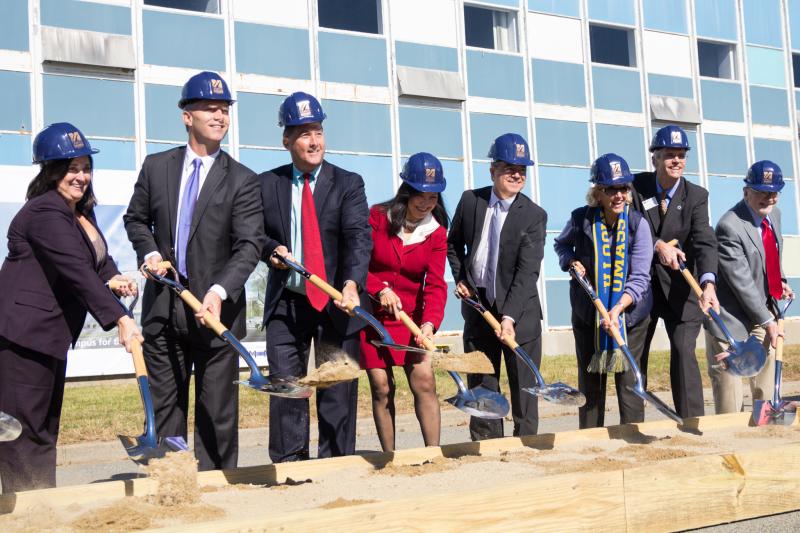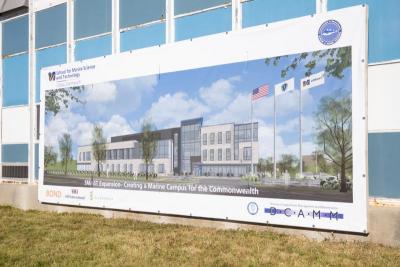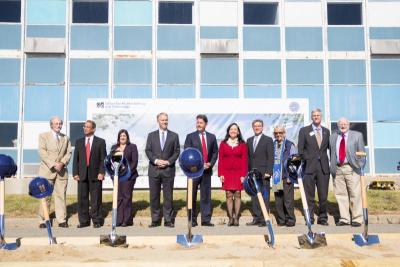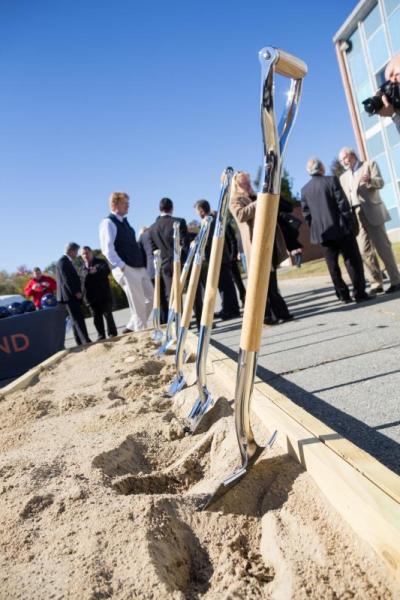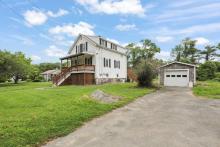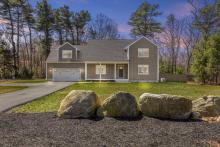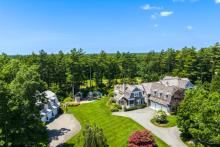Groundbreaking for UMass' new School for Marine Science and Technology building
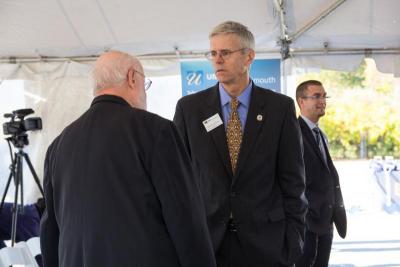
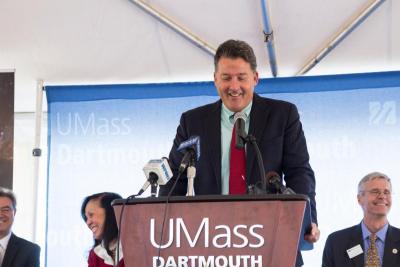
UMass Dartmouth is no stranger to innovation. The university is constantly evolving, improving itself to better its students, staff and the community.
On Friday, Oct. 23, the university took a huge step toward revolutionizing the UMass Dartmouth School for Marine Science and Technology as well as the state’s Division of Marine Fisheries at the groundbreaking of its newest facility, a hub for marine science.
A host of local elected officials joined UMass staff and students at groundbreaking, including Senator Mark Montigny, Representative Antonio Cabral and New Bedford Mayor John Mitchell.
A new 76,000-square-foot facility is being constructed in collaboration with the state’s Division of Marine Fisheries. The expansion will bring in more than 150 faculty, students and staff members from the School for Marine Science and Technology and the Division. The new marine science building will be located beside the existing facility on Clark’s Cove in New Bedford. The $55 million project is slated to be completed in 2017.
The School for Marine Science and Technology works very closely with New Bedford’s lively fishery industry. Students and faculty there assess fish stock, work on coastal preservation and study climate-induced coastal shifts.
This new facility is a big step in UMass’ Transform2020 initiative, an endeavor to shift the university to a doctoral program university. The shift will ultimately “attract, develop and retain talent” said UMass Dartmouth Chancellor Divina Grossman.
Senator Montigny extolled New Bedford’s virtues as home to some of the most beautiful and affordable coastal properties with a thriving and historically poignant cultural centers.
Representative Cabral was present for the first SMAST facility’s ribbon-cutting. UMass’ fish-stock research has helped New Bedford’s commerce.
“Buildings are nice, but it’s the work that takes place inside the building…” Cabral said. “My goal is…SMAST will become this nation’s premier fishing research institution.”
No federal funding was given to the project, said Cabral. Even now, they’re continuing the fight to secure more research money, he said.
Mayor Mitchell was excited by the new opportunities SMAST will bring to New Bedford, which he broke into three parts. First, coastal New Bedford’s vital and beautiful real estate will see more investment. Second, the town will play a key role in fisheries for years to come. With 34 percent of New England’s fishery landings located right in town, “New Bedford is slowly monopolizing [fisheries],” said Mitchell.
“We can’t go up from number one—but we can get bigger,” Mitchell continued.
Lastly, New Bedford is one of the only major urban centers without a home university. Colleges and universities are driving American economy and so having an even more concentrated number of UMass Dartmouth staff and students will greatly benefit New Bedford’s economy.
Massachusetts Division of Marine Fisheries Director David Pierce, born and raised in New Bedford, was excited about what the partnership with the university holds for New Bedford’s future. The goal is for SMAST students and faculties to be able to share space and resources with the local fisheries.
UMass Building Authority Patricia Filippone confirmed that the building will be a high-efficiency facility, which is consistent with the university’s commitment to sustainability.
It’s very important to Steven Lohrenz, the dean of the School for Marine Science and Technology, to keep the main campus connected with the SMAST branches. There will be opportunities for faculty to come teach at SMAST and for students to attend events and become involved. Grad students will also have the chance to come do their own research and participate in internships.
“We want to see how we can connect to the campus in a more integrated way,” Lohrenz said.
Mayor Mitchell is excited by what SMAST will accomplish alongside New Bedford’s fisheries.
“It’s so important to Greater New Bedford that we have this facility,” Mayor Mitchell said. “A real urban core is something we’re trying to achieve here.”



